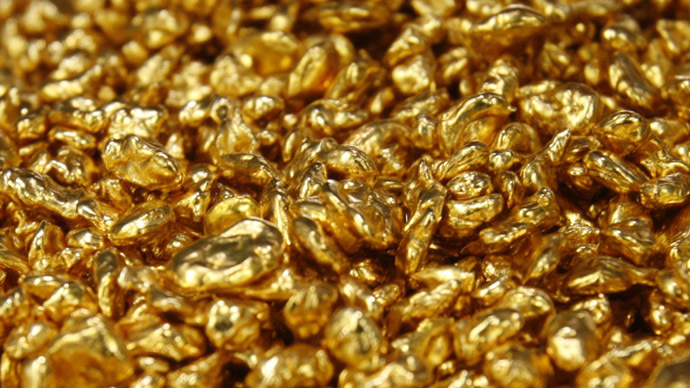California gold prospectors hope state-wide drought will help them strike it rich

Much of California is enduring extreme drought conditions that have left farmers hoping for any rain to water their crops. Prospectors say there’s an upside to the harsh conditions, though, with the depleted conditions exposing previously invisible gold.
Gold was first discovered in California during the latter half of the 1840s, with hundreds of thousands of Americans making their way west from the congested east coast hoping to strike it rich. The gold-seekers - also known as 49ers, prospectors, and by a variety of other names – found so much of the metal that the total, while not known for sure, almost certainly is equivalent to tens of billions of dollars in today’s currency.
Within a few short years the Gold Rush had become so saturated with prospectors that only a small fraction found enough wealth to justify their trip, never mind the fortune they sought. But now, 150 years later, the California drought that has left much of the state desperate for precipitation has inspired a number of people to try their luck again.
CBS’ affiliate in Los Angeles reported that, as water in small creeks and streams throughout Southern California evaporates, more avenues for prospectors are becoming exposed. Gold is currently trading at $1,300 per troy ounce, which is enough of an incentive for families to spend their weekends sifting through the dirt.
“A lot of the time you would just see a husband. Now you’re seeing the whole family,” said Kevin Hoagland, a member of the Gold Prospectors Association of America. Many of the gold pieces he’s found range in value from $5 to $200 apiece.
“While you may not make a fortune, it’s a great way to spend time with the family,” he said. “We can go back over some of the areas where old miners looked in the past and find gold that they missed.”
The conditions in California are so dry that the US federal government has announced that every square mile in the state is enduring some kind of drought. Nearly 15-percent of the state, and much of the farmland, is in an extreme state of drought.
While the Los Angeles area is preparing for its first heavy rainfall in some time, the San Francisco region has experienced a mere 5.85 inches of precipitation since July 1, 2013, about one-third the normal total. Los Angeles has received 1.2 inches over the same amount of time, far short of the normal 10.45 inches.
One couple living in the heart of Gold Country in Northern California probably is not complaining about the conditions. The pair, who have only been identified as a middle-aged couple who have lived on their rural property for years, said they were walking their dog when they discovered $10 million in rare, mint-condition coins buried beneath an old tree.
They found 1,427 coins, according to the Associated Press, and nearly all of them date from 1847 to 1894 and are in uncirculated, mint condition. David Hall, co-founder of Professional Coin grading Service, said the value of the gold pieces adds up to $27,000 but many of the pieces are so rare that they could command $1 million apiece.
How greatly the months-long drought contributed to the finding of the treasure is unknown, but the couple is keeping their identity hidden to prevent prospectors from targeting them or their property. They plan to sell many of the coins online while donating others to local museums and charities, according to Don Kagin, a veteran numismatist who is representing the family.
“I don’t like to say once-in-a-lifetime for anything, but you don’t get an opportunity to handle this kind of material, a treasure like this, ever,” he told the AP. “It’s like they found the pot of gold at the end of the rainbow.”














